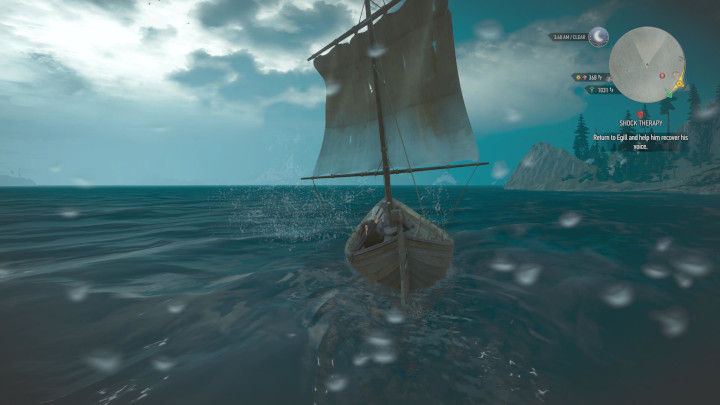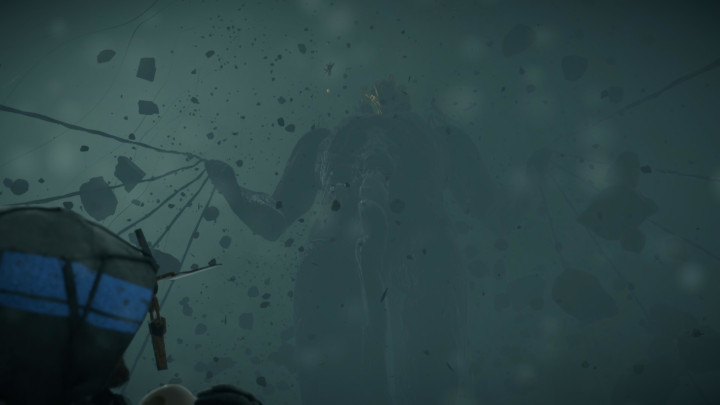
Welcome to the first in what I am hoping will be a series called “It’s Time to Stop.” In this series, I will be discussing certain video-game mechanics or industry trends that probably need to stop. You know what I’m talking about — from specific design staples or mechanics to how the industry approaches announcements in general, these are things that feel tired at best, or toxic at worst.
As I launch my inaugural entry in the “It’s Time to Stop” series, I want to discuss onscreen water effects in games during rainy weather. This trend recently sprung to my mind while playing Far Cry 6, which is far from the first game to have water effects visible on the screen when it rains in game, and certainly not the last (although it should be, if you ask me).
In case you are unaware of what I am referring to, when I say water effects on the screen, I’m talking about those annoying simulated droplets that dot the screen when the player is out in the rain. Some games have them form seemingly dynamically; others go further and actually program the drops to streak down the screen as if you were viewing the game through a window pane.

I first noticed this back in Grand Theft Auto: Vice City, but the trend certainly didn’t start there, with the origin possibly dating as far back as the early aughts (the earliest example I was able to find was Wipeout Pure from 2005, but I bet with some digging, our tireless readers could find some that predate that one). But for me personally, it wasn’t until Vice City that I was consciously aware of it (and continually annoyed by it).
Even so, third-person-perspective games get a bit of a pass, especially a game like GTA which strives for a semblance of realism. Since the camera is pulled back looking at the action onscreen as opposed to through the eyes of the player in a first-person perspective, the inclusion of water droplets on the screen, while distracting or annoying, does actually make sense if the goal is to imitate a world in which the player is merely watching the game play out from behind the protagonist.
But when it occurs in games with a fixed first-person perspective, it removes all sense of realism. This strikes me as either a baffling design choice based on an industry standard, or the result of developers not understanding how rain or water affect a real person’s eyes. Because I would be negligent in my duty if I didn’t point out that when water washes over the human eye, although it does obscure one’s vision to various degrees, never does it bead up in perfect little droplets or globules, which are then scattered across the surface of the iris. This is easily verifiable by anyone who cares to step out into the rain for a moment and subject their eyes to a little abuse.
When this effect is applied in first-person games, it gives the impression that the character is wearing some form of protective or corrective eyewear; goggles, glasses, or even a face shield (I’ll argue that it actually makes sense in something like Metro Exodus, in which you’re wearing a gas mask). So while playing Far Cry 6, a game in which the player character of Dani Rojas is not wearing any such eyewear, it rings as false. And in the case of Far Cry 6 specifically, I noticed the tendency for the drops to just sort of sit there, only occasionally accumulating new droplets while moving the character forward. But when I look toward the sky, there are no new droplets — or a heavier deluge of them — further obscuring my vision.
At best, the more appropriate visual effect would be a blurring of the screen, especially in the case of saltier water when ocean swimming. But the effect would also be somewhat the same if the player were swimming in a chlorine-imbued pool as well. And don’t even get me started on muddier water, like what you would expect to find in games like Far Cry, the more recent Ghost Recon games, or even Death Standing, which seems to use mud quite a lot (at least in its cinematics).

And to circle back to the use of this effect in third-person games, it would only apply if the intention of the developer is to establish that the player is viewing the game through a lens or screen, like, for example, the actual TV screen they are in fact actually viewing the game through. If it is intended that the game in question is being ‘filmed’ by a camera person, à la Mario 64, and that the player is merely watching the game, presumably on a live feed, since they are controlling the character in “real” time, then this effect does make more sense. But that would also imply that the lens would be subject to other environmental effects, like fog in colder climates, similar to how my windshield fogs up in the winter. But we do not see this effect in those instances, so we have to assume the game camera is actually not being lugged around by a cameraperson.
Curiously, we do at times see this effect coincide with snowfall in some games, and in others (namely racing titles), we even see this effect applied to mud from off-road dirt courses. It is even the case that lens flares have also found their way into games, which is another visual effect only viewed by a camera, as the similar effect on the human eye is different (although this effect has also been replicated in various games over the years to varying levels of success).

So perhaps it isn’t just rain, as I originally set out to discuss at the outset of this article, but is instead camera effects across the board. There either must be an established uniform application of these effects, or a complete rethinking of these effects and what they’re supposed to mean.
At the end of the day, it just tends to feel like lazy shorthand visual language, like the old cliché that ice levels should involve some element of the character sliding once the player stops directing them to move. Just because something was done before doesn’t mean it must persist, especially if it is a question of believability. “Because X number of games have used this effect, players must be expecting to see it and so therefore we must also include it in our game.”
And video games are by no means the only medium we see this in — art in general is vulnerable to these lazy or cliched shorthand tricks. Great art typically comments on these elements in the attempt to recontextualize them, or make them make better sense to the person experiencing the art. Mediocre art simply relies on them like a crutch to get across what might otherwise prove too difficult — or, perhaps more often than not, too work-intensive — to be deemed worth the effort.
But then again, considering how lazy some video games are these days, Far Cry certainly not being immune from this label, I guess this is what we can reasonably expect from an industry doomed to corporate stagnation.
But for me personally, I say it’s time to start getting creative. Why don’t we utilize the tools this industry has at its disposal to innovate — or at least create better simulations — as opposed to simply toeing the line. As for the onscreen water effects in video games, I think it’s time to stop.